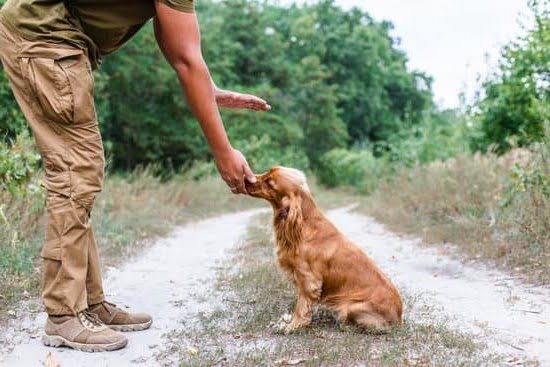Introduction
Training a dog to guard your house can offer homeowners countless benefits. Not only does it boost the security of your home, but properly trained dogs can act as loyal, loving family members that are adored by all who encounter them. A guard dog can protect you against unexpected threats and in some cases even alert you to suspicious individuals that may mean harm. Additionally, having a guard dog will give you peace of mind knowing that your home is better protected while you are away. By taking the time to train your pup correctly and role modeling proper behavior, you can ensure that you and others are safe while maintaining respect for the animal.
Assessment
Before beginning guard dog training you should assess your dog to make sure they are capable of being a successful guard dog. Start by observing their natural instincts, watching how they react to different noises and strangers. Are they more likely to hide or bark? Next, start introducing simple obedience commands such as sit and stay. If your dog is able to do those with ease then he may be ready for guard dog training. Finally, test their attention span and focus by teaching them a few new commands such as watch me and come. If the commands are learned quickly then it’s likely that he is a good candidate for guard dog training.
Once you have assessed and determined that your dog has the necessary traits for guard dog training, here are some steps you can take to help train them:
1) Introduce them to unfamiliar areas or situations where people or animals could pose a threat. Make sure that the area is safe and not too overwhelming for them when introducing the challenge. Show your presence by using comforting words or rewards like treats in order to let them know that it’s okay to show aggression if needed but only upon command.
2) Teach basic commands with verbal cues as well as hand signals so they understand when they need to be protective and when not to be aggressive.
3) Practice making them uncomfortable such as while walking in slightly noisy environments with people around so he is used to reacting without unnecessary outbursts when strangers enter your home.
4) Socialize him regularly using positive reinforcement techniques until all aggression related activities are done exclusively on command as opposed to instinctually
5) Regularly review basic obedience commands, introduce higher level commands such as stay far away from strangers or protect myself first whenever possible so that your dog can defend himself should the situation escalate
Basic Commands
Before beginning the process of training a dog to guard your house, it is important to ensure that basic obedience commands are in place. This will provide the foundation for subsequent work and ensure that all further efforts are successful. Obedience commands such as sit, stay, come and down should be mastered. These should be paired with hand signals to enhance success. Additionally, it is a good idea to have your dog work on leash obedience if possible. This can help you control and direct them when needed during the guarding exercise. If a reliable recall command has not been taught yet, it might be wise to delay the guarding until after this has been accomplished for safety reasons.
Training for guarding specific behaviors should involve using positive reinforcement methods such as treats or praise depending on your dog’s preferences. Provide rewards frequently when they show signs of protecting behavior and watch out for any aggression or tension in order to adjust their environment accordingly. Give guidance whenever necessary while continuing to reward desired behavior until an acceptable guarding response has been formed by the dog. The goal is ultimately to switch from only rewarding desired behavior to periodically checking in with commands and eventually fading out the occasional treat or positive reinforcement completely once acceptable guardian behaviors have been achieved.
Repetition
One of the most important steps when it comes to teaching your dog how to guard your house is repetition. This means that you should regularly practice training sessions with him so that he can effectively memorize the commands associated with his guarding duties and respond to them without much effort. This can involve having him repeat familiar tasks such as standing still in front of identifiable points at the property’s perimeter, barking or growling at unsuspecting intruders, or patrolling certain areas at regular times. Make sure to use plenty of treats and rewards during each session, especially when he shows good performance, in order to encourage him to look forward to each exercise. Repetition will make it easier for your dog to identify threats or intruders quickly and act accordingly upon command.
Motivation
Training a dog to guard your home requires positive reinforcing behaviors to encourage the animal to do its job effectively. Establishing an understanding between yourself and the dog regarding acceptable behavior patterns is key to successful training.
The most important part of teaching a dog how to guard your house is establishing motivation. This can be done through food, praise and play. Start by rewarding the dog when it makes certain gestures that indicate they are being protective while on watch at your home. Some examples include barking at unfamiliar sounds, standing attentively without jumping up, or growling will decrease unwanted guests entering the property. When you see that the desired behavior has been rendered correctly, provide verbal praise and also offer a treat or toy as reinforcement. Games like fetch or tug-of-war can also be rewarding for the animal, creating another useful reward option for your pet.
Consistency is crucial in any type of animal training – and encouraging good guarding habits is no different! Make sure you stay consistent with providing rewards and always avoid punishment should the animal make a mistake, as this could have negative long-term effects on their ability to provide protection you’re expecting from them. Setting aside time every day for training sessions will leave no room for confusion or misunderstanding between owner and pet – allowing them to learn about what behaviors are expected of them in order to guard your house properly!
Social Skills
Training your dog to guard your house includes teaching it good social skills around other animals and people. Start by introducing your dog to a variety of positive experiences, like play dates with friendly, well-trained dogs and brief visits with friendly strangers. When interacting with new people, it’s important to maintain a calm environment and reward them for good behavior. Make sure the stranger is aware of their own body language so they do not appear intimidating to your pup – if possible try having the stranger offer treats or a toy to encourage friendliness.
If possible, also provide supervised opportunities where they can interact safely with neighborhood cats and children. Provide plenty of positive reinforcement when they don’t show signs of aggression in these situations. Giving them access to human or animal friends that come at regular intervals can help them become familiar and more comfortable with the idea that friends come and go in safe ways. As well as regularly providing positive interaction for your pup, consistently reward good behavior with treats, verbal adoration, favourite toys or vigorous petting.
On Duty
Once a dog is trained to guard your home it’s important that you develop specific protocols for when the dog is on duty. Consider when and where the dog will be allowed to move, what kind of alerts and behaviors should be expected from the dog, and how you would like for the neighbors or visitors to interact with them. Make sure the rules are clear and consistent in order for the dog to understand exactly what is expected of them.
When setting these protocols, adjust them depending on the type of security you need and context you are in. If your primary concern is strangers entering your property, consider whether or not having the pup sit while they pass by would provide a sufficient deterrent. If you want extra assurance that unwanted guests won’t attempt to enter again, teaching a deep bark may be appropriate – however this may be too much if people are frequently coming over (you don’t want a nuisance barking situation!). Consider where people will be passing by (such as in common pathways within your garden), so that both yourself and visitors don’t cause any unnecessary disruption for your pup. Set these routes ahead of time so people know what is expected when interacting with your puppy.
Be sure to also include specific commands and instructions for visitors when meeting your pup on guard duty; greetings should not involve feeding or petting them (except with permission!) as this could undermine their assigned role as guardian of your property. Additionally, create some distance between guests and dog by implementing no-go zones coupled with verbal commands such as ‘stay’ or ‘stop’. Ultimately, developing specific protocols can help teach dogs useful boundaries while also maximizing security measures around your house!
Establishing Boundaries
One of the most important aspects of training your dog to guard your house is establishing boundaries. This includes setting up rules for when and where your dog is allowed to bark and how it should interact with visitors. It’s important to be clear about what behavior you consider acceptable and unacceptable so that your dog knows its boundaries. Teach your dog basic commands that help it understand which activities you do or don’t want it to do while guarding your home such as: sit, stay, leave it, and no bark. Make sure to clearly explain what these commands mean and repeat them until the commands are obeyed reliably.
Additionally, you may need to find a balance between making sure people feel welcome in your home whilst also not letting anyone trespass on uninvited. Walking around the perimeter of the property with your dog will help set clear physical boundaries so they can better understand their job when they hear someone approaching. Always be firm when reprimanding unwanted behaviors from your pup, but also make sure to reward good behavior with treats or mental stimulation like a game afterwards. Lastly, if tensions run high during a particular situation try distracting the dog with treats or more general commands rather than punishing it for responses that are instinctual for them as guard dogs.
Final Thoughts
To make sure your dog is ready and able to assume the responsibility of full-time guard duty, you should also work on building its confidence in your presence as well as with other people. Using positive reinforcement such as treats or verbal praise, you should reward your dog when it responds properly to commands from you or a stranger. By associating confident responses with positive rewards and reinforcement, your dog will become more secure and comfortable in their surroundings and learn to respond immediately when called upon for guard duty.
You can also take extra steps to help build up your dog’s self-confidence by exposing them to new situations such as visiting different areas, meeting other people and animals, or trying different activities like agility courses. Make sure that all of these experiences are positive ones so that your pup associates them with confidence boosting results. You may even find that they begin to show signs of feeling proud whenever they face a difficult task – like standing watch at home!

Welcome to the blog! I am a professional dog trainer and have been working with dogs for many years. In this blog, I will be discussing various topics related to dog training, including tips, tricks, and advice. I hope you find this information helpful and informative. Thanks for reading!





